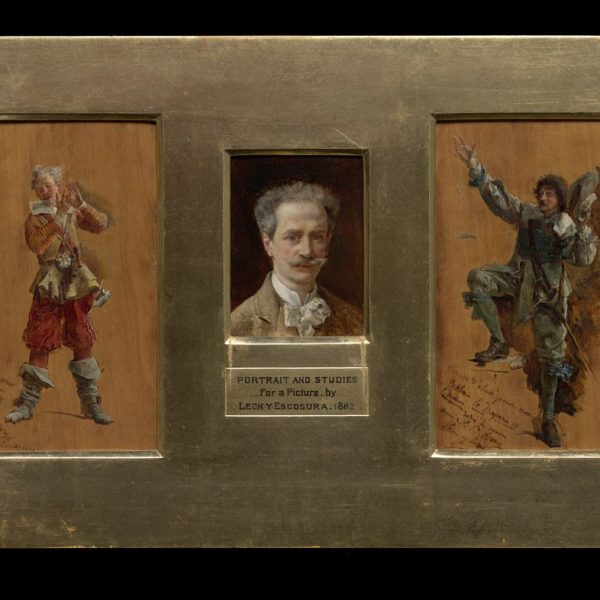León y Escosura, Ignacio
(Oviedo, 1834 – Toledo, 1901)
Although he was born in Oviedo, where he began his artistic training at the School of Drawing under the guidance of Vicente Arbiol, around 1849 he moved with his family to La Coruña, where he attended the School of Fine Arts, later completing his training at the San Fernando Academy of Fine Arts in Madrid. In 1859 he went to Paris, where he worked with Hyppolite Lazerges and Léon Gerôme and in the workshop of Jean-Louis-Ernst Meissonier, who greatly influenced him in the meticulousness and recreation of types and interiors of the sixteenth and eighteenth centuries, so characteristic of his painting. Specializing in genre painting, he painted numerous tavern scenes with musketeers or soldiers in the fashion of the seventeenth century and anecdotal scenes with prominent figures of the golden centuries, especially starring great artists. Another notable influence is the Dutch painting of the seventeenth century, which marks the way of composing spatially and illuminate their interiors.
He regularly attended the Paris Salons and the Spanish National Exhibitions, and participated in the Universal Exhibitions of Paris in 1867, 1878 and 1889 and in London in 1874. In them he obtains numerous awards. It also participated in the Berlin Exhibition (1886), the Madrid International Exhibition (1892) and the Munich Exhibition of 1897, among others. Introduced to the international market by Adolphe Goupil, and to the Anglo-Saxon market by Samuel Putnam Avery, he traveled frequently to London, where he opened a studio, as well as to other countries.
Leon y Escosura also owned an interesting collection of antiques, located in the palace of Alluye, in Blois (France). He used these artistic objects for his meticulous pictorial reconstruction of interiors. He was a Commander of the Orders of Charles III and Isabella the Catholic and artistic delegate of Spain at the Universal Exposition of Chicago in 1893.

